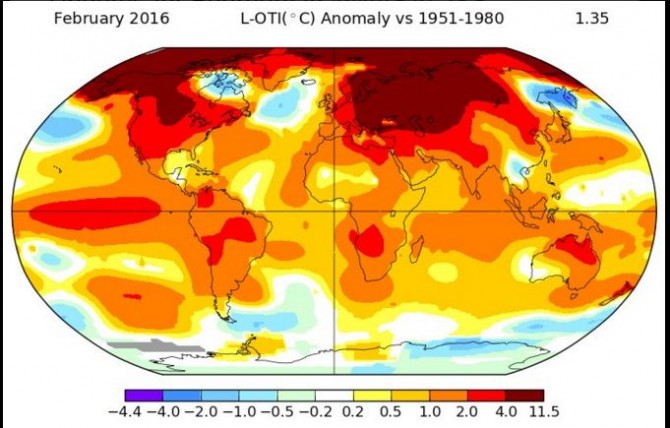Climate change: 2016 saw the hottest February over the last 136 years
Goddard Institute of Space Studies (GISS), a NASA wing, recorded a rise in global temperature by 1.35 degree Celsius above the 1951-1980 average—substantiating the catastrophic implications of global warming—marking the hottest February in 136 years.
Experts believe that the sudden surge in the global warming scales was triggered by EL Nino after it released humongous quantities of heat stored in the tropical Pacific Ocean.
Updates for February in @NASAGISS temperature analysis. Wow. pic.twitter.com/4YOJLjeZ5h
— Gavin Schmidt (@ClimateOfGavin) March 12, 2016
The average change resulted in the rise in temperatures of the land areas of the northern hemisphere—especially the Arctic region temperatures which rose by 6 degree Celsius.

Image Courtesy: Twitter
Climate research centres at the Japan Meteorological Agency and University of Alabama at Huntsville have also confirmed the surge in the average global temperature.
Experts also believe that 2016 will be the hottest year. “Human-caused warming due to increasing greenhouse gases can best be seen over the long term so that the internal variations average out, leaving the more steady increase of global temperatures over those longer time scales,” Washington Post quoted climate scientist Jerry Meehl from the National Center for Atmospheric Research.
Also read:

OMG-inducing, share-compelling, like-attracting, clutter-breaking, thought-provoking, myth-busting content from the country’s leading content curators. read on...
